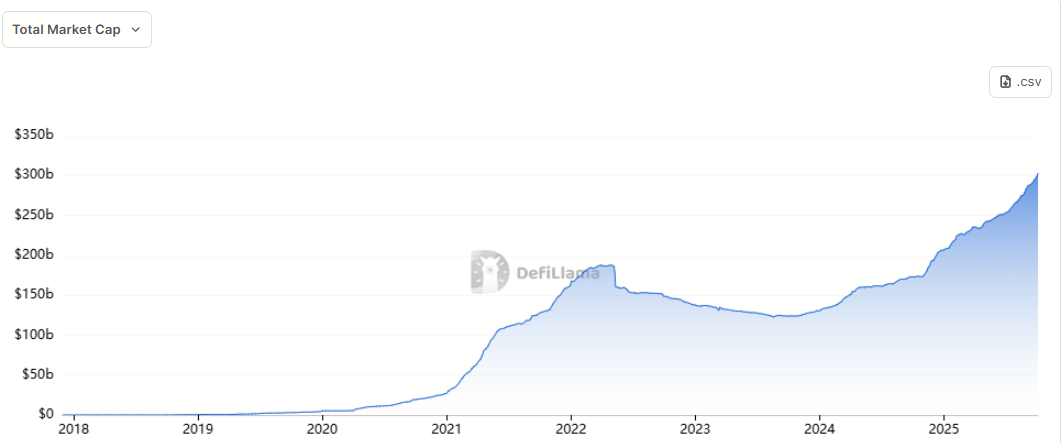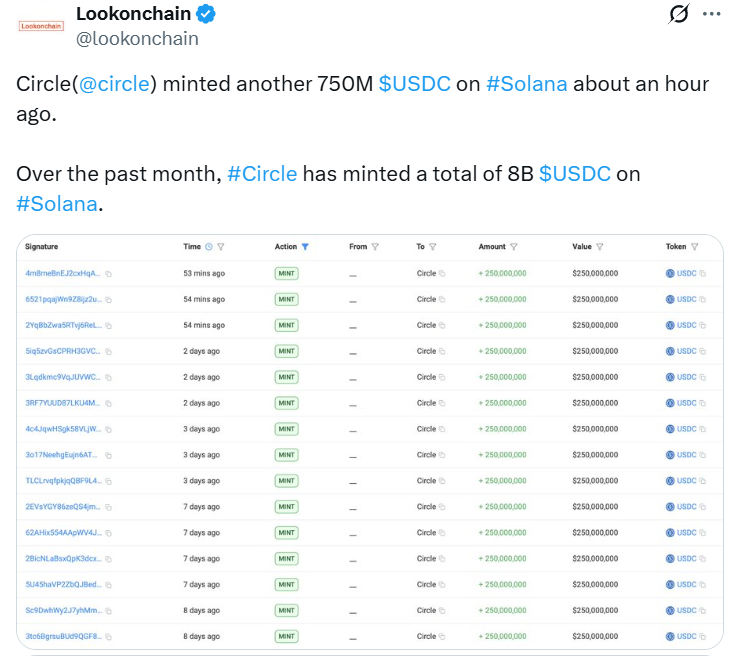The $300 billion stablecoin supply signals growing on‑chain dollar liquidity that can rapidly rotate into Bitcoin, Ethereum and altcoins, potentially fueling price rallies while also reflecting broader adoption of stablecoins for payments, remittances and institutional settlements.
-
$300B stablecoin market cap marks fresh on‑chain dollar liquidity
-
Stablecoins are used for trading, payments, remittances and settlements, not just idle holding.
-
Year‑to‑date growth near 47% and large USDC mint events show rising velocity and institutional use.
stablecoin supply hits $300B — learn what it means for crypto markets and next steps. Read our analysis and outlook.
What does a $300 billion stablecoin supply mean for crypto markets?
The $300 billion stablecoin supply indicates substantial dollar-equivalent liquidity onchain that can quickly rotate into digital assets or be used for payments and settlements. This level of supply suggests both rising adoption and increased transaction velocity, which may support asset price rallies and deeper financial integration.
How is this stablecoin supply growing and where is the liquidity moving?
Stablecoin supply has expanded roughly 46.8% year‑to‑date, driven by minting events and broader adoption. For example, large USDC minting on Solana and sustained monthly transfer volumes point to active capital flows across networks. Analysts report high transaction velocity and frequent use in trades and settlements.

How are stablecoins being used beyond trading?
Stablecoins now serve multiple roles: settlement rails for exchanges, payment rails for merchants, remittance corridors in dollar‑short economies, and dollar access where banking services are limited. Industry practitioners note stablecoins are increasingly integrated into payment systems and institutional flows.
Expert perspectives: Andrei Grachev, founding partner at Falcon Finance, says stablecoins are “moving through markets with purpose” and show transfer volumes in the trillions monthly. Ricardo Santos, CTO at Mansa Finance, points to adoption in markets like Nigeria, Turkey and Argentina where dollar‑pegged tokens act as de facto dollars.

Blockchain data shows notable minting and issuance events—for instance, multi‑billion USDC minting on Solana in recent weeks. These events, combined with stablecoin integration into payment infrastructure, reinforce the view that the supply is active capital rather than idle reserves.
When could this liquidity affect Bitcoin or altcoin prices?
Liquidity impact depends on rotation speed and destination. If a meaningful portion of new stablecoin supply converts to Bitcoin or Ethereum during bullish phases, it can amplify rallies. Historically, months with strong inflows and ETF developments have coincided with price momentum, but timing remains data‑dependent.
Frequently Asked Questions
How fast has stablecoin supply grown this year?
Stablecoin supply has increased by roughly 46.8% year‑to‑date, reaching a record above $300 billion. Growth is driven by minting events, broader adoption and increased use cases such as payments and settlements.
What role do stablecoins play in institutional flows?
Institutions use stablecoins for rapid settlement, cross‑border transfers and liquidity management. Integration into existing payment rails and custody solutions has expanded institutional access to dollar‑equivalent onchain liquidity.
Key Takeaways
- Fresh on‑chain liquidity: $300B stablecoin supply signals substantial dollar‑equivalent liquidity available for markets.
- Active usage: High transfer volumes and minting events show stablecoins are circulating in trading, payments and settlements.
- Market impact potential: If rotated into crypto assets, this liquidity can fuel price moves; monitoring velocity and destination is key.
Conclusion
The record $300 billion stablecoin supply highlights growing integration between digital assets and global finance and reflects both increased adoption and active usage. Market observers should track velocity, minting trends and settlement flows to assess how this liquidity may influence upcoming market cycles. COINOTAG will continue monitoring developments and onchain indicators.
Published: 2025-10-03 · Updated: 2025-10-04 · Author: COINOTAG
